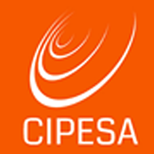By Wairagala Wakabi
Fibre optic cables could flood the Eastern coast of Africa, if plans by the South African and Kenyan governments, as well as various independent investors, come to fruition. Some of the plans are in fairly advanced stages, and seem likely to materialise faster than the inter-governmental East African Submarine Cable System (EASSy), whose take-off has been dogged by wrangles among stakeholders.
Efforts to construct fibre optic cables to link this part [Eastern] of Africa to the international marine cable system have gained momentum over the last year, and are partly attributable to failure by EASSy to take off as planned. Supported by up to 16 regional governments and, 30 telecom companies, and promoted by the New Partnership for Africa’s Development (NEPAD), EASSy was conceived in 2002, and as recently as January last year, its construction was anticipated to have begun by May 2006. Up to now, the ground-breaking ceremony is yet to take place.
Kenya and South Africa (SA), the two countries that have had the most vocal (and often conflicting) opinions about EASSy, have each made individual plans to connect to the international cable, as the misunderstandings over EASSy persist. What is not clear is whether these cables will be complementary to EASSy, or will offer competition that will render the premier regional infrastructure project less viable.
In South Africa, the South East Africa Telecoms (Seat) has been suggested, and the weekly magazine Financial Mail reported in January that the venture enjoyed the financial backing of giant US private equity firm Blackstone. Seat promoters are reportedly talking to South African entities they want to join in, and the magazine reported that local businessman John Mathwasa was among the brains behind this venture.
While details about Seat may still be cloudy, the position is a lot clearer regarding the ongoing expansion of Flag, which is touted as the world’s largest private undersea cable system. Owned by Indian telecom operator Reliance Communications, Flag Telecom owns and manages an extensive optic fibre network spanning Asia, Europe, the Middle East and USA. In the second half of this year, Flag hopes to connect the Kenyan port city of Mombasa to the network it is building in the Gulf region.
Flag Telecom has said the cable will further link SA to Kenya via Mozambique, Tanzania, Madagascar and Mauritius as part of a plan to revamp its global network by the end of 2009.
In mid 2006, Kenya Data Networks, a signatory to the EASSy memorandum of understanding, clinched a deal with Flag Telecom to construct a $115 million link between Mombasa and Yemen. Kenya says it wants to have multiple links to the international fibre optic network, to spur competition, enable affordable services and more reliable communications.
On January 31 2007, Kenyan Information and Communications minister Mutahi Kagwe signed a $2.7 million contract with Tyco Telecommunications to undertake a survey on the construction of The East African Marine Systems (Teams), an $80 million link between Mombasa and Fujairah in the United Arab Emirates. It is a venture where Telkom Kenya (majority owned by the government) will hold a 40% stake and Etisalat of Dubai a 20% shareholding. Private investors, who are likely to buy shares off the Nairobi Stock Exchange, will hold the remaining 40%. The plan is to complete the cable by November this year, though some independent analysts say it is not likely that the cable would come on stream before the second quarter of 2008.
Having alterative fibre optic providers should ideally have the effect of slashing international bandwidth prices which, until now, have been kept artificially high by monopolistic providers, in countries where they exist. In SA, Telkom runs the only two cables linking to the international fibre system, and has been accused of keeping the tariffs artificially high. In much of eastern and southern Africa, the new cables would be able to deliver cheaper bandwidth compared to that currently supplied by satellite.
But will this be case once these cables are in the hands of private cartels over which regulators have no authority? Or should governments take an interest in these planned cables embracing Open Access principles, just as EASSy has?
Telkom has said it is concerned about the number of proposed cables along Africa’s east coast, arguing that deployment of two or more cables within the same region would affect the commercial viability of all of them. But the NEPAD eAfrica Commission’s Policy and Regulatory Advisor, Dr Edmund Katiti, has told Reuters that since EASSy will be operated on a cost-recovery basis, anyone wanting to compete with that will have to operate on the same basis. The catch is that by the time EASSy comes on board, it is likely to find the competitors already entrenched in the market.
For its part, Kenya has argued that Bangladesh with a population of 20 million people has three cables that are fully utilised. It would follow therefore that for countries such as Kenya to become competitive in the global outsourcing business, they need access to more than one cable.
Separately, SA’s department of public enterprises is planning to use a newly created state enterprise, InfraCo (or Infrastructure Company), to build a submarine cable to link SA with other international cables in the British Virgin Islands. InfraCo has been capitalised with R647 m ($89.8 m) to enable it to provide wholesale international bandwidth to telecom operators and Internet service providers, among others.
Lyndall Shope-Mafole, the SA director general for communications, told the SA parliament in January that InfraCo, which was formed by the communications arms of Eskom (a power company) and Transnet (a transport infrastructure company), would be available for any company – including Telkom – to use at cost. With www.fibreforafrica.net
